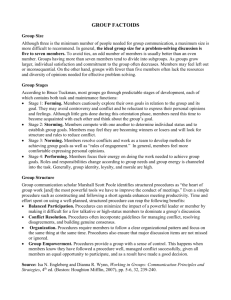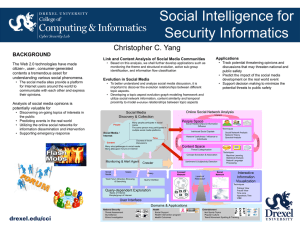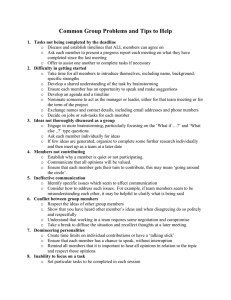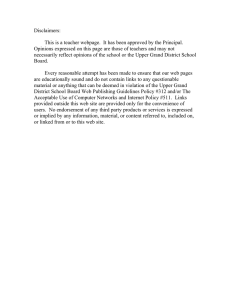Opinion Dynamics Anthony
advertisement
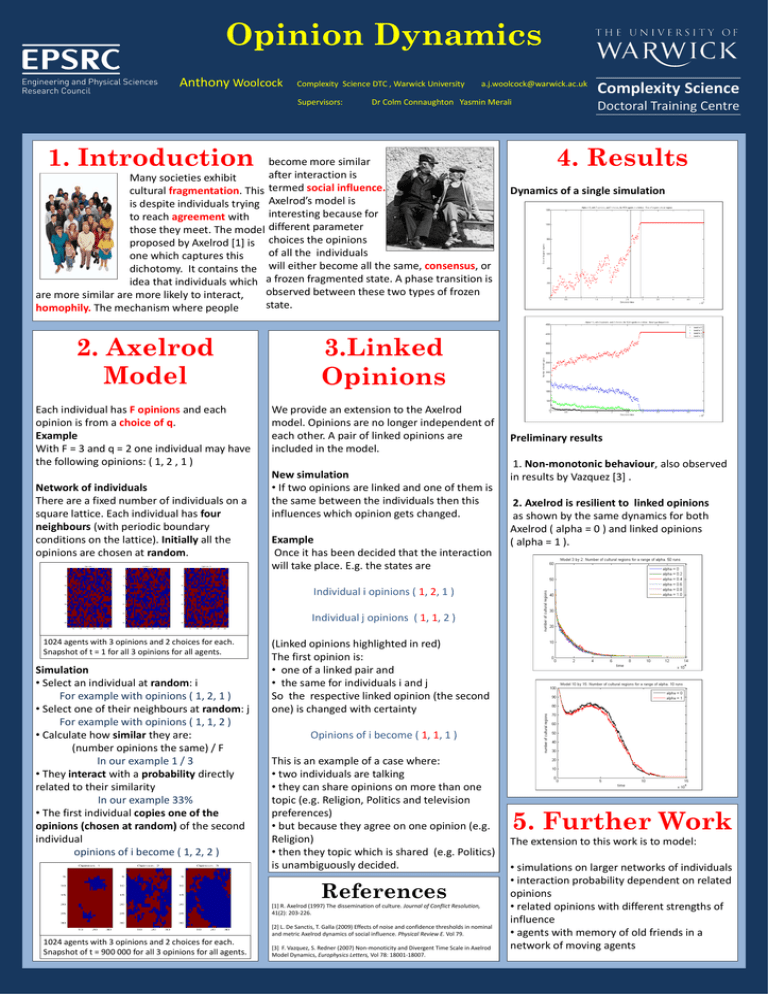
Opinion Dynamics Anthony Woolcock Complexity Science DTC , Warwick University Supervisors: a.j.woolcock@warwick.ac.uk Dr Colm Connaughton Yasmin Merali 1. Introduction become more similar after interaction is Many societies exhibit cultural fragmentation. This termed social influence. is despite individuals trying Axelrod’s model is interesting because for to reach agreement with those they meet. The model different parameter proposed by Axelrod [1] is choices the opinions of all the individuals one which captures this dichotomy. It contains the will either become all the same, consensus, or idea that individuals which a frozen fragmented state. A phase transition is observed between these two types of frozen are more similar are more likely to interact, state. homophily. The mechanism where people 2. Axelrod Model 3.Linked Opinions Each individual has F opinions and each become more similar is opinion is from a choice of q. Example With F = 3 and q = 2 one individual may have the following opinions: ( 1, 2 , 1 ) We provide an extension to the Axelrod model. Opinions are no longer independent of each other. A pair of linked opinions are included in the model. Network of individuals There are a fixed number of individuals on a square lattice. Each individual has four neighbours (with periodic boundary conditions on the lattice). Initially all the opinions are chosen at random. New simulation • If two opinions are linked and one of them is the same between the individuals then this influences which opinion gets changed. Example Once it has been decided that the interaction will take place. E.g. the states are 4. Results Dynamics of a single simulation Preliminary results 1. Non-monotonic behaviour, also observed in results by Vazquez [3] . 2. Axelrod is resilient to linked opinions as shown by the same dynamics for both Axelrod ( alpha = 0 ) and linked opinions ( alpha = 1 ). Individual i opinions ( 1, 2, 1 ) Individual j opinions ( 1, 1, 2 ) 1024 agents with 3 opinions and 2 choices for each. Snapshot of t = 1 for all 3 opinions for all agents. Simulation • Select an individual at random: i For example with opinions ( 1, 2, 1 ) • Select one of their neighbours at random: j For example with opinions ( 1, 1, 2 ) • Calculate how similar they are: (number opinions the same) / F In our example 1 / 3 • They interact with a probability directly related to their similarity In our example 33% • The first individual copies one of the opinions (chosen at random) of the second individual opinions of i become ( 1, 2, 2 ) (Linked opinions highlighted in red) The first opinion is: • one of a linked pair and • the same for individuals i and j So the respective linked opinion (the second one) is changed with certainty Opinions of i become ( 1, 1, 1 ) This is an example of a case where: • two individuals are talking • they can share opinions on more than one topic (e.g. Religion, Politics and television preferences) • but because they agree on one opinion (e.g. Religion) • then they topic which is shared (e.g. Politics) is unambiguously decided. References [1] R. Axelrod (1997) The dissemination of culture. Journal of Conflict Resolution, 41(2): 203-226. [2] L. De Sanctis, T. Galla (2009) Effects of noise and confidence thresholds in nominal and metric Axelrod dynamics of social influence. Physical Review E. Vol 79. 1024 agents with 3 opinions and 2 choices for each. Snapshot of t = 900 000 for all 3 opinions for all agents. [3] F. Vazquez, S. Redner (2007) Non-monoticity and Divergent Time Scale in Axelrod Model Dynamics, Europhysics Letters, Vol 78: 18001-18007. 5. Further Work The extension to this work is to model: • simulations on larger networks of individuals • interaction probability dependent on related opinions • related opinions with different strengths of influence • agents with memory of old friends in a network of moving agents
